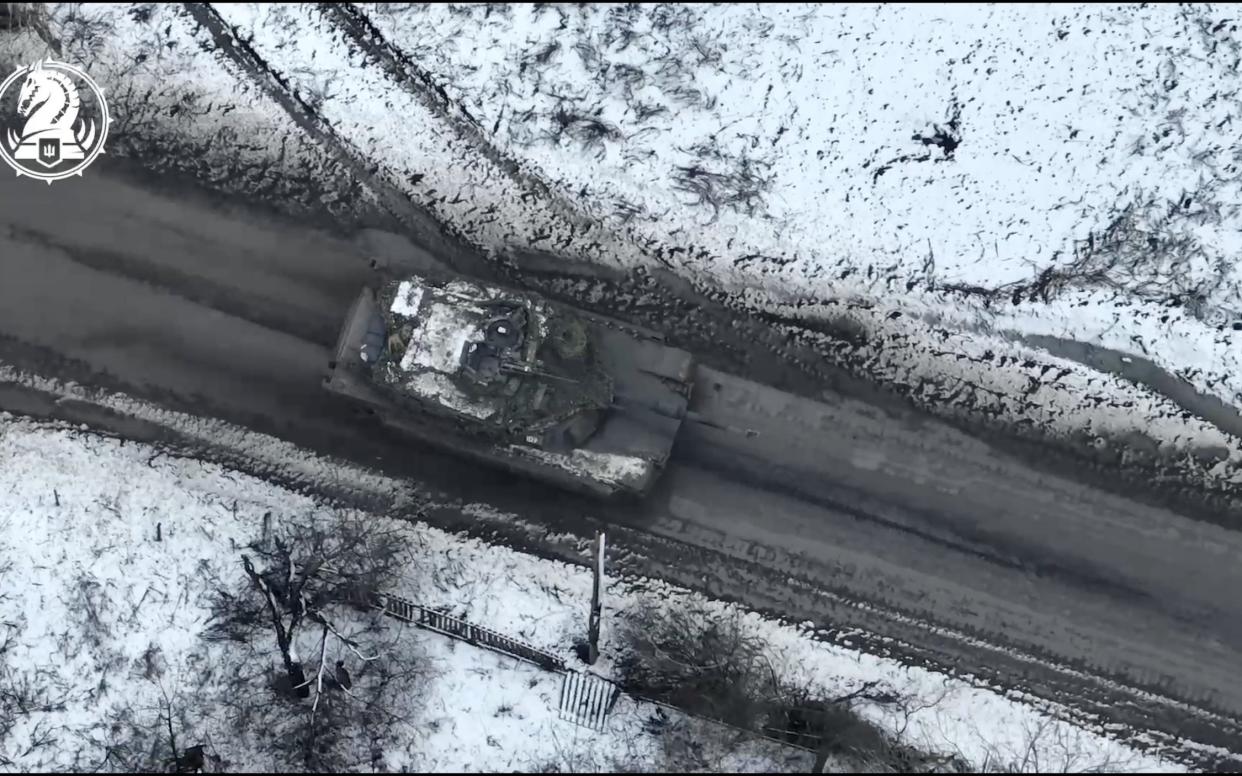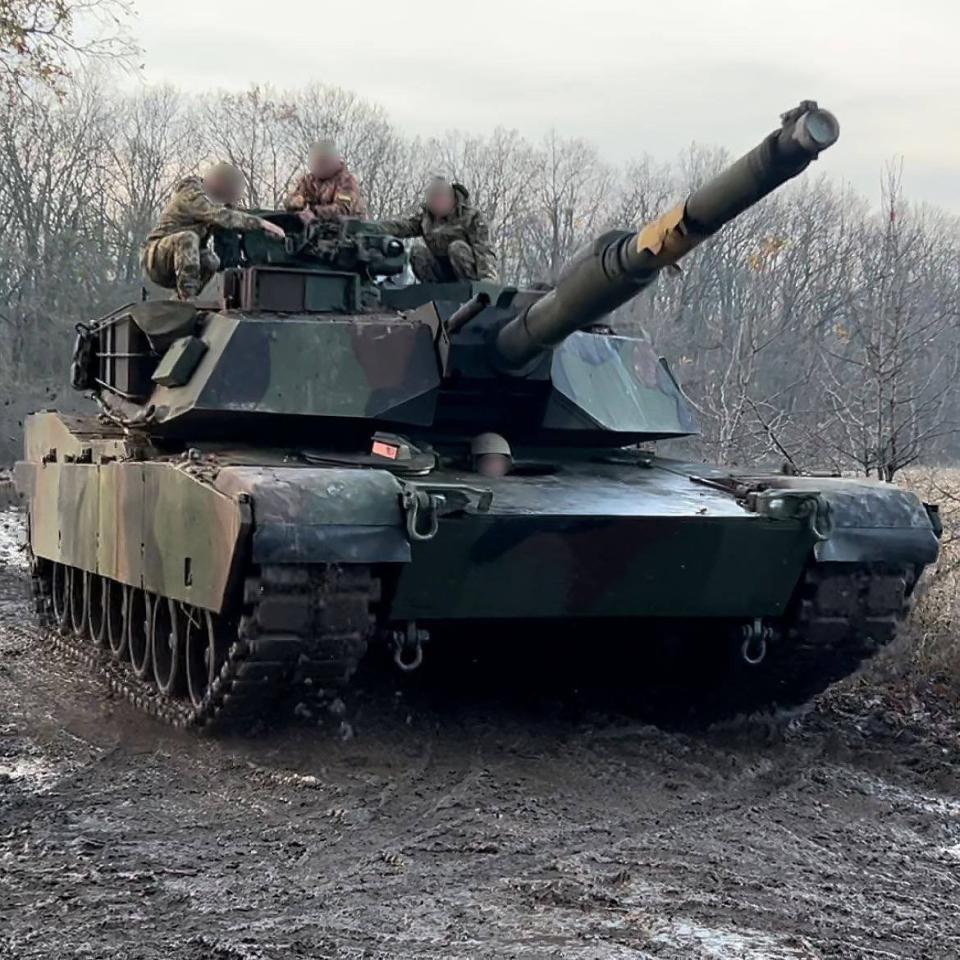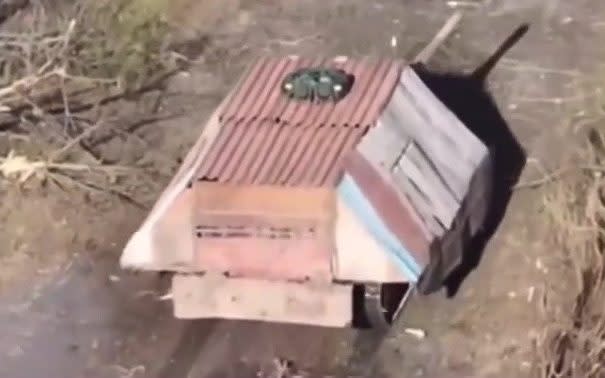Ukraine withdraws Abrams tanks from front line amid barrage of drone attacks

Ukraine has quietly withdrawn its American Abrams tanks from the front line to avoid the growing threat from Russian drones.
The mass proliferation of drones by both Ukrainian and Russian forces has made it difficult for large armoured vehicles to move around the battlefield undetected.
“There isn’t open ground that you can just drive across without fear of detection,” a senior US defence official told reporters.
Five of the 31 tanks, which cost $10 million (£8 million) each, have already been lost to Russian attacks, US officials said as they admitted they had been forced to review tactics.

With the front lines largely frozen and the ground still boggy, many Western main battle tanks have been deployed as mobile pillboxes, making them susceptible to Russian attack drones.
Adml Chris Grady, the vice-chairman of the Joint Chiefs of Staff, confirmed that Ukraine had pulled back its remaining Abrams tanks from the front line in an interview with the Associated Press news wire.
“When you think about the way the fight has evolved, massed armour in an environment where unmanned aerial systems are ubiquitous can be at risk,” he said.
“Now, there is a way to do it,” he added. “We’ll work with our Ukrainian partners, and other partners on the ground, to help them think through how they might use that, in that kind of changed environment now, where everything is seen immediately.”
The Abrams tanks were sent to Ukraine amid major fanfare after tortuous negotiations between allies. British Challenger 2s and German-made Leopard 2s have also been lost or damaged in combat.
Ukrainian tank crews will probably use the withdrawal to modify their machines to offer better protection from the network of drones buzzing above the battlefield.
Tanks have been spotted in Ukraine with rudimentary guard rails and nets around them to block suicide drones from striking the main part of the vehicle. Russia has recently built corrugated “shells” around some vehicles, which have subsequently been nicknamed “turtle tanks”.

The withdrawal of the Abrams tanks will allow Ukraine to reintroduce its repaired and refitted Soviet-era tanks damaged at the start of the war.
Western main battle tanks are best when they are rapidly advancing in shock-and-awe raids, Hamish de Bretton-Gordon, a former British military tank commander, said.
“Tanks are all about shock action, which is using its mobility and firepower to move around the battlefield very quickly and strike where needed,” he said.
But over the winter months, when the ground is too wet to move heavy armoured vehicles across quickly, Ukraine has deployed its tanks as “pillboxes” to offer protection across the front lines.
Static front lines
The static front lines, with little progress made by either the Ukrainians or Russians, have made it virtually impossible to use tanks to their full potential.
“The Abrams and Challenger 2 are much better protected than Russian tanks but when they are static, that becomes a problem, and they’re highly prized assets,” he added on the threat of Russian drones.
Most of the drones deployed over the battlefield are modified to drop rocket-propelled grenades on enemy targets.
These are not normally strong enough to defeat a Western tank’s armour but they are capable of finding weak spots at the top of the machines.
60pc armour coverage
Most tanks feature a 60 per cent armour coverage, which is designed to protect them from head-on threats. The protective systems were devised at a time when drone warfare was not as prevalent.
Makeshift metal cages – known as cope cages – have been bolted to tanks by both Russia and Ukraine to protect them more.
Tanks are also best used alongside enablers such as infantry units and artillery fire, offering them cover to punch through defensive lines – Ukraine has been short of both.
When Abrams returns, it might just have both a Ukrainian artillery cover and F-16 fighter jet firepower to give it more manoeuvrability on the battlefield.

